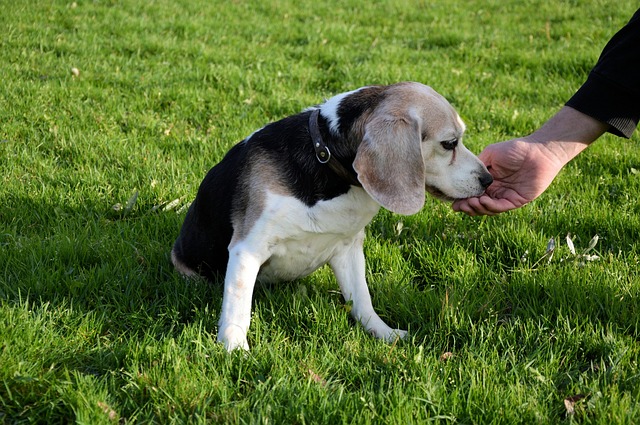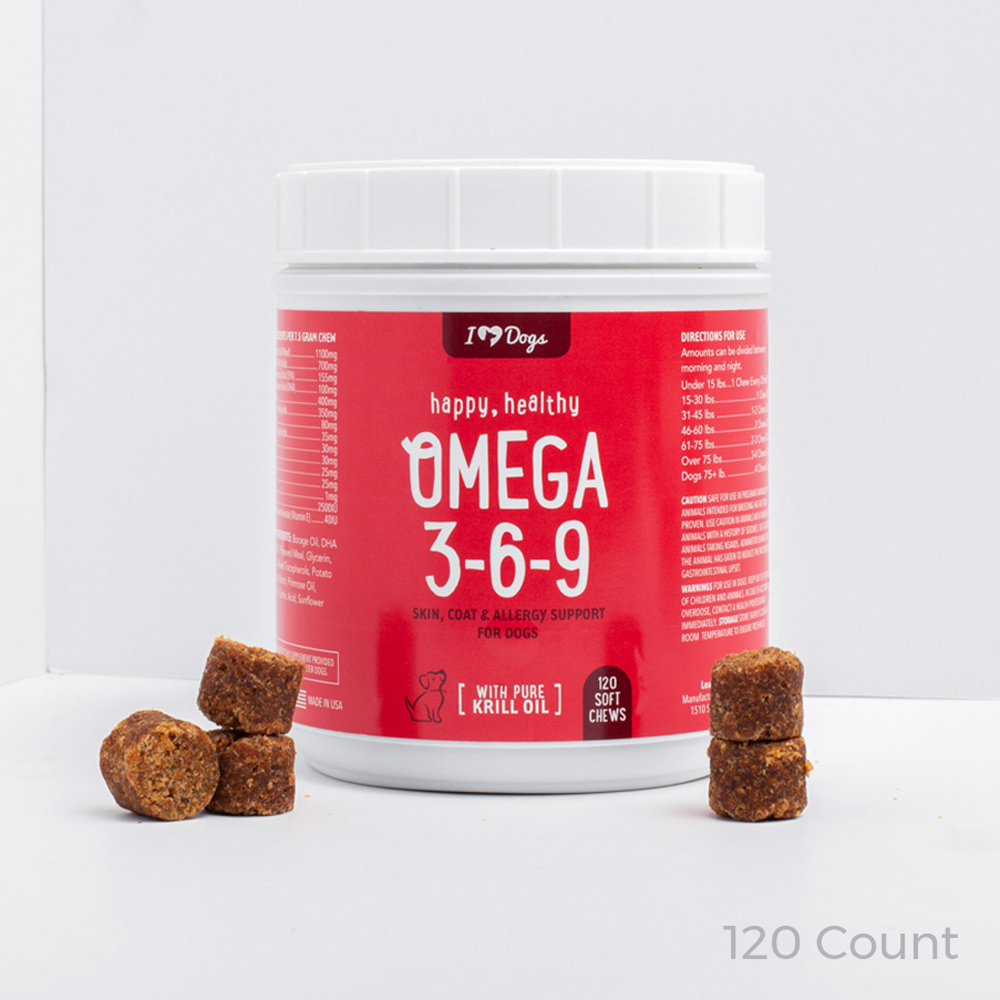You’re used to the shedding, but some dogs suffer from more extreme cases of hair loss. Patches of missing fur on your pup’s chest, belly, shoulders, or legs could mean a number of different things. Infections, irritations, and allergies all cause bald spots, and there’s also the risk of your dog developing painful hot spots. You’ll need to discern the exact cause of the issue to find the most efficient solution, but there’s one nutrient that could help bring back your pup’s healthy fur coat.

What are Omega-3 Fatty Acids?
There are two main kinds of omega-3 fatty acids you want to know about. EPA and DHA are nutrients found in certain types of food. They aid the body in everything from embryonic development to disease prevention. You and your dog both need them, but when it comes to canines, omega-3 fatty acids are especially important for healthy skin and fur.
The canine body cannot produce the EPA and DHA it needs to function properly and stay healthy. As a result, dogs rely on their diets to provide them with the proper nutrients. The most well-known source of omega-3 fatty acids is fish. Certain types of fish, like salmon and mackerel, are rich in omega-3. Flax, eggs, and walnuts are other good sources. Most dog food brands lack sufficient levels of omega-3 fatty acids, and dog owners rely on nutrient supplements to give their pets what they need. If your dog frequently gets hot spots and bald patches, the issue could be related to not enough EPA and DHA in their regular diet.

How Omega-3 Fatty Acids Help Fur and Skin
Inflammatory Skin Disorders
Dogs with allergies and early atopy often loose their fur in patches as they’re busy itching their irritated skin. One of the best benefits of omega-3 fatty acids is the anti-inflammatory properties. Inflammatory skin disorders, like allergies, cause the skin to become dry, itchy, and irritated. Dogs can be allergic to things in their environment, like grass and dust, or ingredients in their food, like wheat or sweet potatoes.
RELATED: Which Omega-3 Supplement Does iHeartDogs Recommend?
Atopic dermatitis, on the other hand, is a chronic skin disease related to allergies. In most cases, it gets worse with time, and side effects are similar to those of an ordinary allergic reaction. The longer it’s left untreated, the more your dog will itch, and the more hair they’ll lose. Omega-3 fatty acids work to reduce the symptoms by calming the skin. With this relief, dogs can take a break from the biting and scratching that leads to unsightly patches.

Dry Skin and Hot Spots
Besides allergies, nutrient deficiency is another condition that leads to an increased risk of dry skin and bald patches. Your pup will do everything they can to find relief even if that means itching so much their fur falls out. Unhealthy skin and fur is easy to spot. The dog’s coat will look dull and feel especially rough. Some breeds have naturally coarse fur, but an unhealthy coat is often brittle and broken. If you spot these signs alongside regular bald patches, insufficient omega-3 intake could be to blame.
Many dogs who suffer from unhealthy skin and fur also develop hot spots. These areas of irritated skin range in size and are identified as being red, moist, and irritated lesions. They usually show up on a dog’s head, hip, and chest, but it’s possible to get them anywhere. In their search for relief, dogs usually lick and chew the infected areas, and this consequently makes the situation worse. Hot spots are usually caused by allergic reactions, flea bits, poor grooming, or excessive licking brought on by boredom. Regardless of how they got there, they’re always painful.
Omega-3 fatty acids effectively improve the health of fur and skin and relieve general dryness and hot spots. Increasing the levels of EPA and DHA in a dog’s system is one of the best ways to promote a healthy coat and stave off reoccurring skin issues.
Adding Omega-3 Fatty Acids to Your Dog’s Diet
The most efficient way to give your pup more Omega-3 fatty acids is to invest in a quality supplement. Fish oil and krill oil supplements are both excellent sources of omega-3, but not all brands are equally effective. Look for a product that uses concentrated ingredients formulated into a tasty and easy-to-digest tablet.
If supplementation makes sense for your dog, we’d encourage you to try out the Happy, Healthy line of canine Omega-3 supplements, which features a grain free formula using krill oil.
These statements have not been evaluated by the Food and Drug Administration. This product is not intended to diagnose, treat, cure, or prevent any disease. The information on this website is not intended to replace a one-on-one relationship with a qualified healthcare professional.

 Toledo, United States.
Toledo, United States.